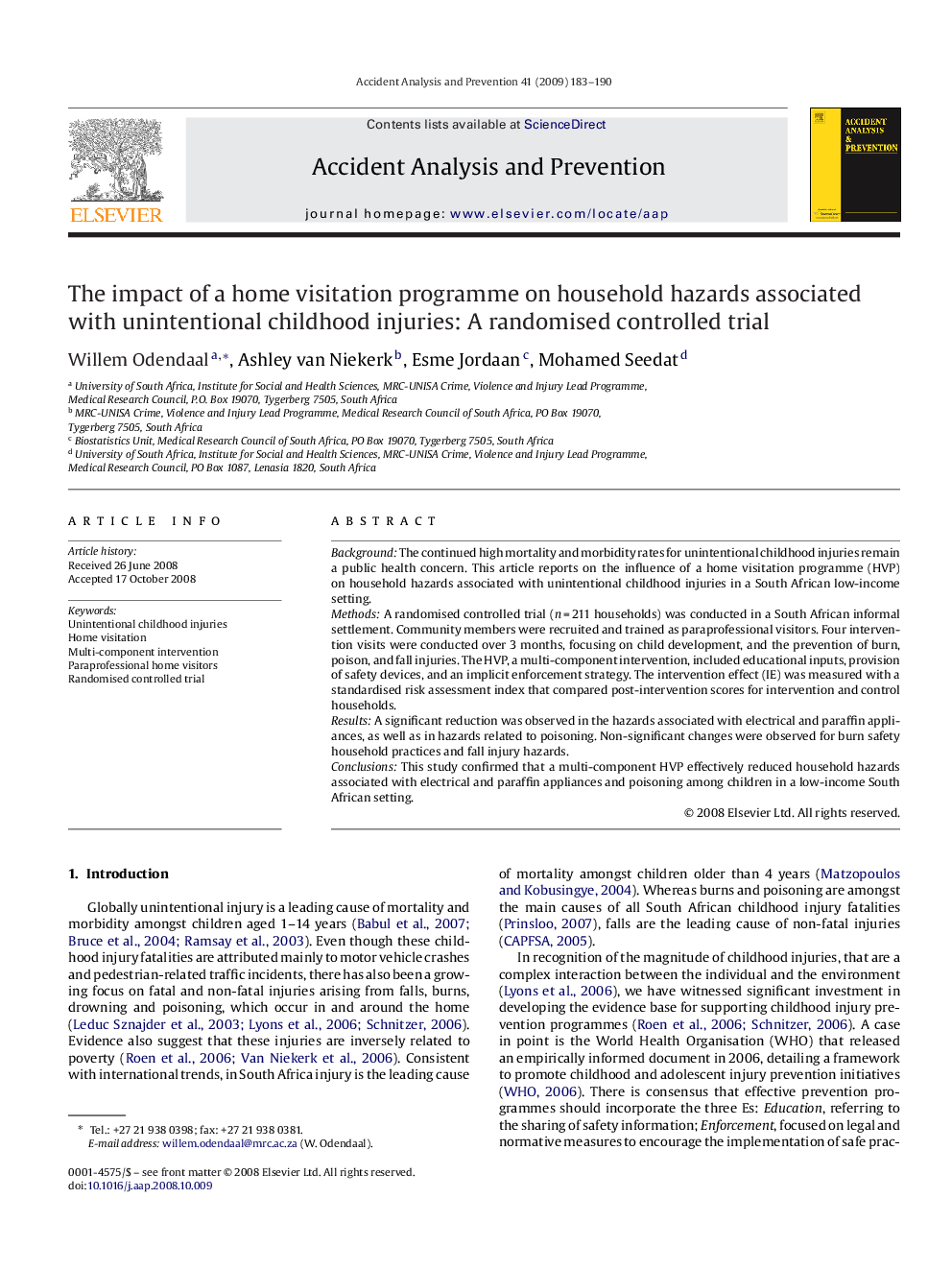| Article ID | Journal | Published Year | Pages | File Type |
|---|---|---|---|---|
| 573556 | Accident Analysis & Prevention | 2009 | 8 Pages |
BackgroundThe continued high mortality and morbidity rates for unintentional childhood injuries remain a public health concern. This article reports on the influence of a home visitation programme (HVP) on household hazards associated with unintentional childhood injuries in a South African low-income setting.MethodsA randomised controlled trial (n = 211 households) was conducted in a South African informal settlement. Community members were recruited and trained as paraprofessional visitors. Four intervention visits were conducted over 3 months, focusing on child development, and the prevention of burn, poison, and fall injuries. The HVP, a multi-component intervention, included educational inputs, provision of safety devices, and an implicit enforcement strategy. The intervention effect (IE) was measured with a standardised risk assessment index that compared post-intervention scores for intervention and control households.ResultsA significant reduction was observed in the hazards associated with electrical and paraffin appliances, as well as in hazards related to poisoning. Non-significant changes were observed for burn safety household practices and fall injury hazards.ConclusionsThis study confirmed that a multi-component HVP effectively reduced household hazards associated with electrical and paraffin appliances and poisoning among children in a low-income South African setting.
